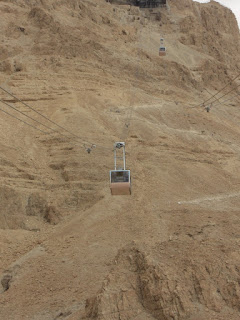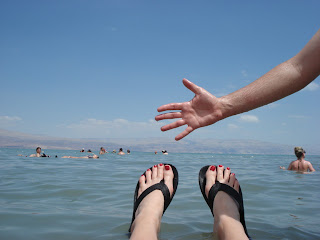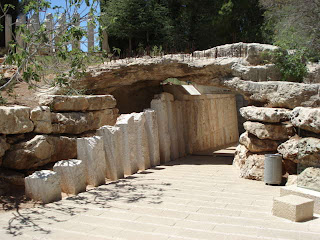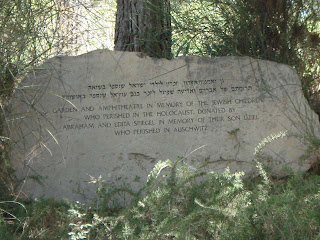We started out from Jerusalem on Monday morning. Our tour guide/driver was a man named Joesph Sahar. Unlike Israel, our last tour guide, Joesph was an observant Jew, or as he described himself, a traditionalist. Where we have Conservative and Reformed Jewish congregations in the States, in Israel, you are either Traditionalist, Orthodox, or non-observant.
We had two ladies with us as well from New Jersey who were added at the last minute and they were upset because they were separated from their group. Luckily we would lose them to that group in a few hours.
As we left Jerusalem, we made our way south towards Eilat. The ride would take most of the day, but we would stop in various locations along the way. Our first stop was in the Israeli Air Force Museum located in the Negev desert on the outskirts of Beersheba on the Hatzerim Airbase.
It was kind of a lame place, real run down, but it was part of the tour so we made the best of it and I was able to get my new favorite "gummy" popsicle.
We saw a lot of Israeli military aircraft that were used during the last several decades and we also got to watch a video inside the Boeing 707 that was used to free the hostages in Entebbe after an Air France flight enroute from Paris to Athens was hijacked and diverted to Uganda.
After leaving the Air Force Museum, we continued to make our way south. We stopped and had lunch in a Bedouin tent and were given the opportunity to ride a camel. After our tour guide told us about how a camel bit off his middle finger as a child, Kirsten and I opted to watch the others. Our new friends Rick and Tai were brave enough to give it a try. I chose instead to simply impersonate one.
We enjoyed a traditional Bedouin meal. We go to sit on big pillows and eat pita bread and hummus and drink juice that tasted like tang. Kirsten made me drink the strong Bedouin coffee. Or rather, I pretended to drink it.
After our meal, we continued south. We made a stop at Sde Boker, a kibbutz where Ben Gurion, the founding father of Israel, lived in his later years. It is also the site of his burial. The kibbutz offers great views of the Negev desert and all it's beauty.
On our way to Ben Gurion's tomb, we got to see Ibex, which are a breed of wild goats originating from the Middle East. The babies are adorable. We named the one we saw Lance.
I was able to place a stone on Ben Gurion's tomb as a way of paying my respect.
The kibbutz also has it's own vineyard and I purchased a bottle of Israeli Malbec for us to enjoy that evening in Eilat.
The further south we ventured, the more it started to resemble no-man's land. Our tour guide told us that the Negev is so desolate that it was even used as a backdrop for a movie about Mars, given the desert's resemblance to the red planet.
The most desolate stretch of the trip took us by the Ramon Crater. It's not really a crater, but actually the end result of what used to be an ocean 40 million years ago. The area is 40 km long and 2 - 10 km wide. As the ocean and rivers in the area drained away, the bottom was made of a softer rock and eroded at a fast rate creating a crater like look.
The next few hours to Eilat were rather quiet. I think we all took a nap (except for Joesph). He woke us up just outside Eilat where we stopped at a place that he said had the best ice cream in all of Israel.
We finally made it Eilat in the late afternoon. The city is located on the southern most part of the Negev desert where it meets the Red Sea. Because of it's location, it now serves as a beach resort, while maintaining an active port. We had a great room at our hotel with a balcony overlooking the Red Sea.
The Jordanian city of Aqaba lies directly to the east and was visible from our hotel balcony.
























































